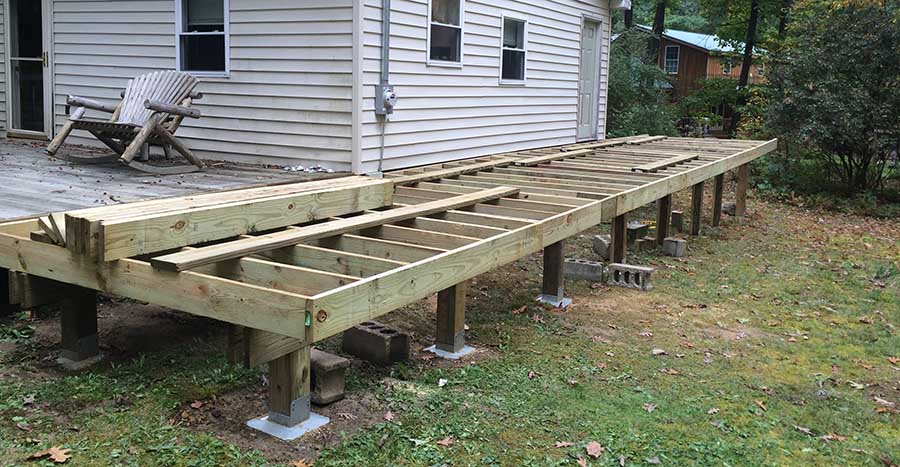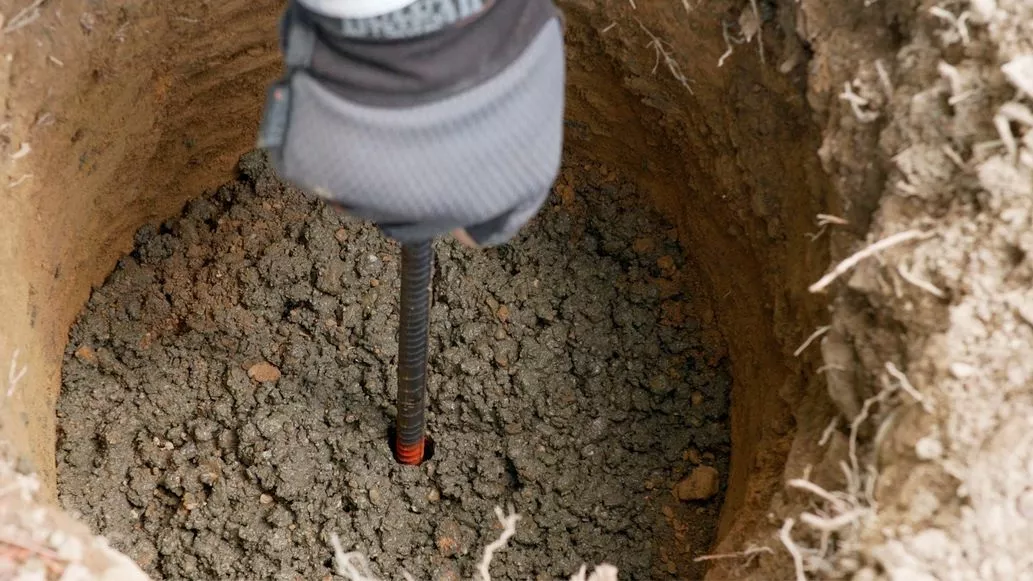Step-by-Step Deck Excellence: Guaranteeing Stability with Correctly Set Up Deck Footings
Selecting the Right Deck Footings for Stability and Sturdiness
When it concerns developing a deck, one of one of the most essential choices you will make is choosing the right footings for security and toughness. The durability and security of your deck depend heavily on the sort of footings you choose, as they offer the necessary support and stability to stand up to the test of time. With a myriad of alternatives offered, it can be overwhelming to establish which grounds are best fit for your specific demands. In this discussion, we will certainly check out the various kinds of deck footings, take into consideration the essential factors to evaluate when making a choice, and look into the advantages and disadvantages of different alternatives. By the end, you will have a more clear understanding of the selections available and be far better furnished to make a notified decision for your deck job.
Types of Deck Grounds
These grounds consist of a round opening filled up with concrete, which offers a solid structure for the deck blog posts. Concrete pier grounds are fairly simple to mount and supply excellent stability, making them a prominent option for lots of deck tasks.
These grounds are set up by screwing them into the ground, which creates a protected foundation for the deck. They additionally permit for easy modification and progressing of the deck if needed.
Conversely, some builders opt for precast concrete grounds. These footings are made from sturdy concrete and can be found in various sizes and shapes to suit different deck designs. Precast concrete footings are convenient to mount and supply a secure base for the deck structure.
Ultimately, one more option is the post-in-anchor footing system. This sort of footing involves driving a metal anchor into the ground and attaching it to the deck message. It provides adaptability in regards to placing the deck articles and is appropriate for decks with light-weight structures.
When selecting the ideal sort of deck footing, it is necessary to take into consideration elements such as dirt conditions, deck tons, and local building regulations (Deck Footings). Consulting with a specialist specialist or structural designer can help make sure the proper ground is selected for a secure and secure deck
Aspects to Consider When Choosing Grounds
When picking the suitable footings for a deck, it is vital to thoroughly think about numerous elements such as dirt problems, deck lots, and adherence to neighborhood building regulations. These variables play a substantial role in ensuring the stability and toughness of the deck structure.
The type of soil on which the deck will certainly be constructed determines the kind of footings needed. On the various other hand, decks developed on clay or expansive soils may call for grounds that can fit the soil's propensity to broaden and contract.
Another crucial factor is the deck load. The weight of the deck, consisting of the materials utilized and any potential real-time lots such as furniture or celebrations, need to be considered when selecting grounds. The footings must be made to birth the weight of the deck and disperse it evenly to avoid any architectural problems or failures.
Finally, adherence to local building ordinance is extremely important. Building codes vary from area to area, and it is necessary to adhere to Read Full Report the details requirements set by the neighborhood authorities. Deck Footings. These codes ensure that the deck is developed securely and satisfies the needed criteria for architectural honesty and load-bearing capacity
Concrete Grounds: Cons and pros

Concrete grounds offer a number of benefits and drawbacks when made use of as the foundation for a deck. On the positive side, concrete grounds offer superb security and sturdiness.
An additional benefit of concrete footings is their convenience. They can be poured right into different sizes and shapes to suit various deck layouts and configurations. Concrete footings can be personalized to fit the certain requirements and requirements of the deck structure.
Nevertheless, there are additionally some disadvantages to making use of concrete footings. One major disadvantage is the expense and labor involved in their installment. Concrete footings require excavation and frequently require the help of hefty machinery. This can raise the general cost of the deck project and might call for specialist aid.

Helical Piers Vs. Sonotubes: Which Is Much better?
In considering the foundation alternatives for a deck, the contrast between helical piers and sonotubes is critical in determining the remarkable option. They are turned into the ground utilizing hydraulic equipment, offering a long lasting and stable foundation for the deck.
The helical plates on the piers create a strong grasp with the soil, shifting or stopping any activity of the deck. Sonotubes, on the other hand, count entirely on the concrete loading for stability, which might not provide the very same level of strength and resistance.
In regards to installation, helical piers are reasonably much easier and faster to install contrasted to sonotubes. The hydraulic machinery used to turn the piers into the ground makes certain a fast and effective procedure. Sonotubes, on the other hand, call for excavating holes and putting concrete, which can be time-consuming and labor-intensive.
In addition, helical piers are an even more flexible you can find out more option. They can be utilized in various soil problems and can be readjusted or enhanced if required. Sonotubes, on the other hand, might need added assistance, such as rebar, in certain soil conditions or locations with high tons needs.
Selecting the Right Footings for Your Deck's Dimensions
For optimal structural stability, it is essential to meticulously choose the suitable footings that align with the measurements of your deck. The measurements of your deck, including its size, size, and height, play a significant duty in figuring out the type and dimension of grounds called for.
When picking grounds for your deck, it is essential to consider the load-bearing ability of the soil. The weight of the deck, combined with the weight of any kind of furnishings or people on it, applies a considerable pressure on the footings (Deck Footings). It is crucial to select grounds that can adequately support this weight without moving or sinking over time.
Larger decks with greater dimensions call for larger footings to give sufficient security and assistance. The form of the grounds, whether they are square or round, depends on the design and additional reading layout of the deck.
Verdict
To conclude, choosing the appropriate deck footings is vital for ensuring stability and durability. Elements such as the sort of footings, the deck's measurements, and the advantages and disadvantages of different alternatives should be taken into consideration. Concrete grounds use stamina and longevity, but might be extra pricey and lengthy to install. Helical piers and sonotubes have their own advantages and drawbacks. Ultimately, selecting the ideal footings for your deck's details requirements is vital for a effective and resilient framework.
These grounds consist of a cylindrical hole loaded with concrete, which supplies a strong foundation for the deck posts. Concrete pier grounds are reasonably simple to set up and provide superb security, making them a prominent option for many deck tasks.
Precast concrete footings are hassle-free to mount and supply a stable base for the deck structure.
It uses flexibility in terms of placing the deck articles and is appropriate for decks with lightweight structures.
Concrete grounds offer several advantages and negative aspects when utilized as the structure for a deck.